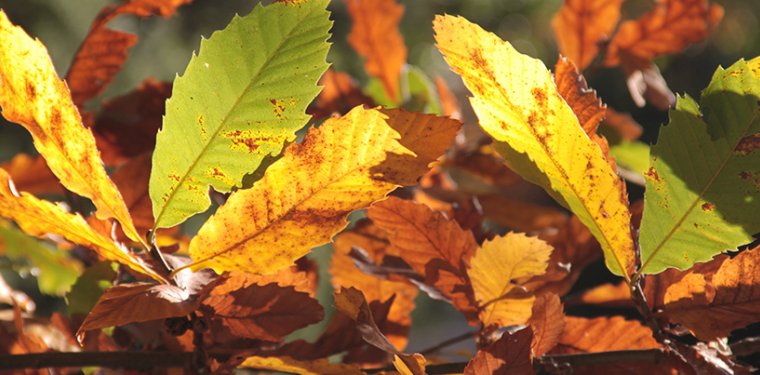Chestnut or chestnuts?
If we ask the chestnut tree this basic question, it will give us an ambiguous answer, because all chestnut trees produce both chestnuts and marrons, in greater or lesser proportions and in larger or smaller sizes, depending on the variety.
If we turn to the confectioner or the scientist, the fruit called chestnut is a partitioned fruit, meaning that a small skin (tan) crosses and divides the fruit (a bit like a walnut), while the chestnut is a non-partitioned fruit, remaining whole once shelled.
Chestnut trees produce chestnuts if the proportion of partitioned fruit is greater than 12%, and chestnuts if the proportion is less than 12%.
All chestnut trees come from the same family: CASTANEA SATIVA MILLER, which means cultivated chestnut. It belongs to the dicotyledonous class and the Fagaceae family.
This family comprises several genera, the best-known of which are beech (Fagus), oak (Quercus)...
The chestnut is one of the largest trees in our forests. Its trunk is massive, and its glossy, toothed leaves are rich in tannin.
It takes around fifty years for this tree to reach its adult size, and it begins to be really productive in the middle of its growth. It lives to be several centuries old, with some trees reaching a thousand years old.
The chestnut tree's origins go back a very long way. Fossil leaves and a chestnut similar to today's chestnut have been found in the Corion massif in Ardèche, dating back 8.5 million years (Miocene, Tertiary era).
During the ice ages of the Quaternary era, the chestnut tree probably retreated southwards, and quickly reestablished itself in its present location. Pollen grains dating back 5,000 years have been found in peat bogs.
This tree has been established in Europe for so long that it is difficult to distinguish between stands of spontaneous origin and those of ancient cultivated origin, imported from the East and more or less returned to the wild. 10,000 years ago, during the Mesolithic period, man began to use the chestnut tree, and it was around the 6th century B.C. that its cultivation, known as Castaneiculture, was born.
In France, the chestnut tree grows in regions of ancient geological origin, with predominantly acidic soils: mainly Brittany, Limousin, the Cévennes, the Montagne Noire, the Pyrenean Piedmont, the Maures and Estérel massifs, and Corsica.
During the first half of the 20th century, the chestnut tree continued to play an important role in balancing the resources of the Pays des Maures. The various harvests followed one another: harvests, grape harvests, chestnut harvests, olives, then hunting... Until the 1950s, chestnuts were transported by the wagonload to Marseille, where they were sold the next day at the "Criée".


